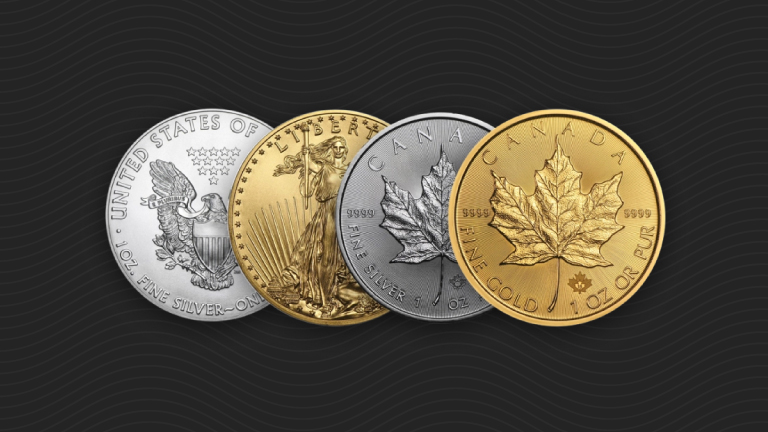Gold Production and the Yuan/Dollar Peg (Audio)
Peter Schiff uses his latest podcast to dig into the fundamentals of gold production in Canada and the United States. He also explains why mainstream analysts are completely clueless when it comes to understanding how the Chinese yuan is affected by its peg to the dollar. He wraps up by looking at the terrible condition of US student loan debt, and the government policies that empower college students to make terrible career decisions.
Highlights from Peter’s podcast:
“Gold prices are continuing their surge. I think it is the biggest 7 day rally in the price of gold since 2011… The Wall Street investment houses have been negative on gold since the beginning of the year. Nobody has turned positive yet, which is good news. I don’t think they’re going to be turning positive for a while…
“As big as the rise has been in dollars, it’s even bigger in other currencies, with the lone exception of the Swiss franc… Gold is now down priced in Swiss francs, but that’s not going to last long. I think gold is going to recover everything it lost to the Swiss franc in short order…
“I mentioned the stealth bull market that went on in 2014, with gold rising against every currency. Well, now it’s rising against every currency including the dollar… A good example of the bull market in other currencies is in the Canadian dollar, which got plastered today. The Canadian dollar dropped by more than 1.5%. This is the lowest it has been in years… The impetus was some negative industrial production numbers coming out of Canada. Of course, we’ve had even worse economic data coming out of the United States for months, and nobody seems to care about that. Everyone is worried about the Canadian economy and how lower oil prices are going to impact it, yet nobody has those concerns about the US economy…
“The all-time record high [for gold in Canadian dollars] was just under 1800. We’re almost there. We’re less than 15% from a record high gold price in Canada… We’re miles away from a record high in dollars, but we’re almost there in Canadian dollars. This shows you what’s going on outside the prism of the dollar… If we make a record high in Canadian dollars, a record high in US dollars is not going to be too far off…
“Canada is a major gold producer. I think it’s interesting that Canada does not produce as much gold as the United States… But not if you adjust for the population. We maybe produce 70-80% more gold than Canada, but we’re 10 times as large… Canada is in a better position to ramp up its gold production. Canadian gold production is maybe 20% or so higher than it was, let’s say, in 2006. Whereas US gold production is maybe 20% lower. The US has been lowering its production. In fact, back in 2006, America produced twice as much gold as Canada and Mexico. Now we produce about the same amount of gold as Canada and Mexico. So our production has been declining…
“I think Canada is really set to ramp up production, given the improvement in the cost situation for mining, especially if I’m right about the price of gold continuing to rise. Even if you get softening in the Canadian economy as a result of a weakness in the oil price, I think an increase in gold production and gold mining is going to pick up the slack. We’re not going to have that in the United States…
“Last year, we had a big rise in the gold price from January through March. Then it fizzled out. This time, I don’t think it’s going to fizzle out. I think we’re going to have a stronger second half than first half, and I think that’s going to be bullish for the Canadian economy…
“The peg between the Swiss franc and the euro is small when it’s compared to the impact of the China peg, [which] pegs the both the Hong Kong dollar and the Chinese yuan to the US dollar. This is much more significant… I think that’s the next big peg to go…
“The Chinese, just like the Swiss, have a ceiling on their currency. They’re preventing their currency from rising. The reason it was costing Switzerland so much to maintain the peg is because they had to buy all these euros. They had 500 billion in foreign reserves, the majority of which accumulated while maintaining that ceiling on the Swiss franc. That was the cost… That is the same cost that the Chinese are bearing. Their balance sheet is bigger… They have 4.5 trillion in foreign reserves. Those reserves were accumulated while keeping the ceiling on the yuan, preventing it from going up. So if you remove the peg, the yuan is not going to go down, it’s going to go way up, just like the Swiss franc…
“The only way that China cold devalue its currency would be if it moved the peg… They would have to lower the peg and fix the Chinese yuan at an even lower level… It would be even more expensive for China. They would have to buy even more dollars to defend an artificially lower exchange rate, because money is going to keep pouring into the yuan and they’re going to keep selling dollars…
“You have these professional guys [on CNBC] that can’t figure this out… They think if they take the peg away, the Chinese currency is going to collapse. No, it’s the dollar that’s going to collapse. The peg is propping our currency up…”
Get Peter Schiff’s latest gold market analysis – click here – for a free subscription to his exclusive weekly email updates.
Interested in learning more about physical gold and silver?
Call 1-888-GOLD-160 and speak with a Precious Metals Specialist today!

